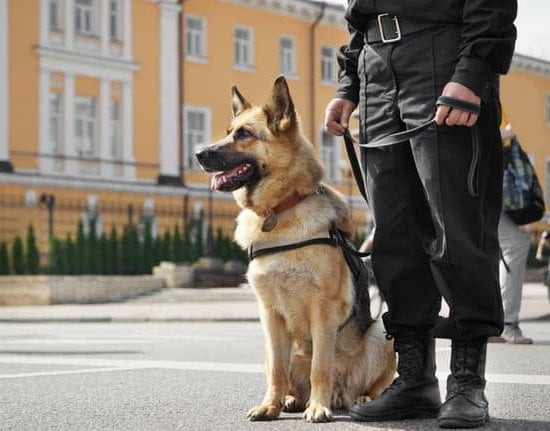Are you interested in learning how to train a dog for obedience competition? Obedience competitions for dogs require a high level of skill, discipline, and training from both the handler and the dog. In this article, we will explore the rules and expectations of obedience competitions and provide valuable insights on how to prepare your canine companion for success in these events.
Before diving into the training process, it is important to establish a strong foundation built on trust and a deep bond with your dog. This foundational relationship will serve as the cornerstone for successful obedience training and competition performance. Once this bond is established, you can begin teaching your dog essential commands such as sit, stay, come, and heel – all of which are crucial for obedience competition.
As you progress in your training journey, you will also need to introduce more advanced commands such as extended stays, off-leash obedience, and precise heelwork. These advanced obedience commands are essential for excelling in competitive obedience events.
Additionally, we will explore different training techniques including positive reinforcement and clicker training that can help in the development of a well-trained canine athlete ready for competition. So let’s dive into understanding obedience competitions and exploring what it takes to train a canine companion for success.
Setting the Foundation
Before delving into the technical aspects of training a dog for obedience competition, it is crucial to first establish a strong bond and trust with your canine companion. Without this foundation, the training process may be challenging and less effective. Building a positive relationship with your dog is not only essential for obedience competition but also for overall well-being.
To set the groundwork for a successful training journey, spend quality time with your dog to create a strong bond based on mutual respect and trust. Engage in activities that both you and your dog enjoy, such as playtime, walks, or simply relaxing together. This will help strengthen your connection and understanding of each other.
Positive reinforcement is key in building trust and confidence in your dog. Use treats, praise, and affection to reward good behavior and encourage your dog’s willingness to learn. By creating a positive association with obedience training, you are laying the groundwork for a cooperative and willing participant in the competition training process.
Consistency in commands and actions is also important in establishing trust. Dogs thrive on routine and predictability, so maintaining consistency in expectations will help build trust between you and your furry companion. Remember that training should be an enjoyable experience for both you and your dog, fostering a positive relationship that will ultimately contribute to success in obedience competition.
By focusing on setting the foundation of trust and bonding with your dog before commencing obedience training, you are ensuring a solid framework for success in the competitive arena. Understanding these foundational principles is instrumental in preparing both you and your dog for the rigorous demands of obedience competition training. With this strong basis of trust and camaraderie, you can proceed confidently into the next phase of teaching basic obedience commands essential for competition readiness.
Basic Obedience Commands
Training a dog for obedience competition requires a solid foundation in basic obedience commands. These fundamental commands are essential for any dog’s training, but they are particularly important for dogs preparing to compete in obedience trials. Here are some essential commands that every dog should master before entering a competition:
- Sit: Teaching a dog to sit on command is usually one of the first commands that owners teach their dogs. It is an important foundational skill that can be used in various situations, such as when greeting people or waiting at doorways.
- Stay: The stay command is crucial for maintaining control over your dog in different situations. Whether you need your dog to stay by your side during a walk or remain still while you attend to something else, a reliable stay command is essential.
- Come: This command teaches the dog to come to its owner when called. It is an important safety measure and gives the owner peace of mind, especially when off-leash.
- Heel: Heelwork involves teaching the dog to walk calmly and closely beside its owner without pulling on the leash. This command is vital for competition obedience as it demonstrates the dog’s ability to focus and follow instructions accurately.
When teaching these commands, it’s crucial to use positive reinforcement and be patient with your dog. Consistency is key, and regular practice will help reinforce these essential skills.
As you begin training your dog for obedience competition, remember that mastering these basic commands requires time and dedication. By establishing a strong foundation in these fundamental skills, you will be setting yourself and your canine companion up for success as you progress into more advanced obedience training techniques.
Advanced Obedience Commands
Training a dog for obedience competition requires progressing from basic commands to more advanced ones in order to achieve success in the competitive arena. Once your dog has mastered the essential commands such as sit, stay, come, and heel, it is time to introduce more complex obedience commands. Extended stays, off-leash obedience, and precise heelwork are crucial skills that will set your dog apart in obedience competitions.
Extended stays are essential for obedience competition as they demonstrate the dog’s discipline and focus. Start by gradually increasing the duration of the stay command while gradually adding distractions to test your dog’s level of obedience.
Next, off-leash obedience is a vital skill that showcases your dog’s ability to listen and respond even without a physical connection. This requires patience and consistent training to ensure that your dog obeys commands reliably without the need for a leash.
Precise heelwork is another advanced obedience command that takes time and dedication to perfect. This involves teaching your dog to walk closely by your side with a straight body position and maintaining eye contact with you at all times. As with any advanced command, positive reinforcement is key to success when training these skills.
In preparing for an obedience competition, mastering these advanced obedience commands will not only impress judges but also provide a strong foundation for further training and success in other canine sports. Consistently practicing these advanced commands using positive reinforcement techniques will ensure that your dog is well-prepared for the rigors of an obedience competition.
| Obedience Command | Description |
|---|---|
| Extended Stays | Demonstrates discipline and focus by gradually increasing duration of stay command with distractions. |
| Off-leash Obedience | Showcases the ability to obey commands reliably without a leash through consistent training. |
| Precise Heelwork | Teaches the dog to walk closely by your side with straight body position and maintaining eye contact. |
Training Techniques
When it comes to training a dog for obedience competition, it’s important to explore and understand different training methods and approaches. Each dog is unique and may respond differently to various techniques, so it’s crucial to find the best approach that works for both the dog and handler. Two popular training methods for obedience competition are positive reinforcement and clicker training.
Positive reinforcement is a powerful tool for shaping and changing behavior in dogs. This method involves rewarding your dog with treats, praise, or toys when they perform the desired behavior.
By using positive reinforcement, you can create a strong association between the desired behavior and a positive outcome, making your dog more likely to repeat that behavior in the future. For example, when teaching the “sit” command, you would reward your dog with a treat every time they successfully sit on command.
Clicker training is another effective technique that can be utilized when training a dog for obedience competition. This method involves using a small handheld device called a clicker to mark the exact moment your dog performs the desired behavior.
The sound of the clicker serves as a signal to your dog that they have done something right and will receive a reward. Clicker training can help improve communication between you and your dog, leading to better focus and precision during obedience training sessions.
To effectively train a dog for obedience competition, it’s essential to be patient, consistent, and adaptable in your approach. By understanding different training methods such as positive reinforcement and clicker training, you can tailor your approach to suit your dog’s individual needs and maximize their potential for success in obedience competitions.
- Positive reinforcement is an effective tool for shaping behavior
- Clicker training improves communication between handler and dog
- Adaptability is key in finding the best approach for each individual dog
Problem-Solving
Training a dog for obedience competition can be a challenging yet rewarding endeavor. As you embark on this journey with your furry companion, it is important to be prepared for common challenges and behavioral issues that may arise during the training and competition preparation process. By understanding these potential roadblocks and knowing how to address them effectively, you can set yourself and your dog up for success in the world of obedience competition.
One of the most common challenges that handlers may encounter when training their dogs for obedience competition is disobedience or lack of focus. Dogs are intelligent animals with their own personalities and distractions, so it’s natural for them to occasionally exhibit behaviors that are less than ideal during training sessions.
To address this challenge, it’s important to practice patience and consistency. Using positive reinforcement techniques and incorporating regular, short training sessions into your daily routine can help improve your dog’s focus and overall behavior.
Another common issue that handlers may face is leash pulling or difficulty with heeling. Proper leash manners and precise heeling are essential skills in obedience competitions, so it’s crucial to address any problems in these areas early on in the training process.
One effective technique for addressing leash pulling is utilizing clicker training paired with rewards to reinforce loose-leash walking. Additionally, incorporating heelwork drills into your training regimen can help improve your dog’s ability to walk calmly and attentively by your side.
In addition, some dogs may struggle with staying calm in high-stress environments such as competitions. It’s important to gradually expose your dog to various stimuli and environments while reinforcing positive behaviors. Building confidence through socialization and desensitization techniques can help reduce anxiety and ensure that your dog remains focused and composed during competition settings.
| Common Challenges | Addressing Techniques |
|---|---|
| Disobedience/focus issues | Positive reinforcement, short training sessions |
| Leash pulling/difficulty with heeling | Clicker training, heelwork drills |
| Anxiety in high-stress environments | Socialization, desensitization techniques |
Conditioning and Fitness
Building Endurance and Strength
In order to excel in obedience competitions, dogs need to be physically fit and have the endurance to perform various commands for an extended period of time. It’s important to incorporate regular exercise, such as brisk walks, running, or agility training, into your dog’s routine to build strength and stamina. Additionally, including activities that challenge their coordination and balance can help improve their overall physical conditioning.
Diet and Nutrition
Proper nutrition is essential for maintaining your dog’s overall health and fitness. A well-balanced diet rich in high-quality protein, essential fatty acids, vitamins, and minerals will support their energy levels and muscle development. Consult with a veterinarian to ensure that your dog is receiving the appropriate nutrition for their specific needs based on their age, breed, and activity level.
Mental Preparation:
Stress Management
Obedience competitions can be stressful for both the dog and handler. To prepare mentally, it’s important to practice relaxation techniques and positive reinforcement methods. Teaching your dog how to remain calm in various environments and situations can help reduce anxiety during competition.
Consistency in Training
Consistency in training not only strengthens the bond between you and your dog but also builds mental discipline. By setting clear expectations during training sessions, you can help your dog develop focus, patience, and a willingness to work through challenges. Consistent training also helps the handler maintain a positive mindset and confidence when preparing for obedience competitions.
Competition Preparation
Mock Competitions
One of the most effective ways to prepare for an obedience competition is to simulate the experience of a real event through mock competitions. This allows both the dog and the handler to practice their routine in a setting that closely resembles the actual competition environment.
It provides an opportunity to refine performance, work out any kinks, and familiarize the dog with the sights, sounds, and distractions they may encounter on competition day. Mock competitions also offer valuable practice in managing nerves and building confidence for both the dog and handler.
Handling Nerves
Nerves are natural, especially when entering a high-stakes situation like a competition. The key is to manage them effectively so they don’t interfere with performance. Both the dog and handler can benefit from relaxation techniques such as deep breathing, visualization exercises, and positive self-talk leading up to and during the competition. It’s important for handlers to stay calm and confident to provide leadership and reassurance for their dog.
Maintaining Focus and Confidence
Maintaining focus and confidence is crucial for success in obedience competitions. Dogs look to their handlers for guidance and rely on their cues to know what is expected of them. Consistent training leading up to the competition will build trust between the dog and handler, increasing the dog’s confidence in following commands even in distracting or stressful situations.
Handlers should maintain a positive attitude, remain focused on their goals, and exude confidence, which will be reflected in their dog’s performance. Keeping a consistent routine leading up to the competition can help reduce stress for both the dog and handler.
Conclusion
In conclusion, training a dog for obedience competition requires dedication, patience, and consistency. It is important to establish a strong foundation of trust and bonding with your canine companion before delving into the training process.
Basic commands such as sit, stay, come, and heel are essential for obedience competition, but advanced commands like extended stays and off-leash obedience are crucial for success in the competitive arena. It’s also vital to explore different training techniques such as positive reinforcement and clicker training to find the most effective approach for your dog.
Furthermore, addressing common challenges and behavioral issues that may arise during obedience training is key to overcoming obstacles and progressing towards competition readiness. Physical conditioning and mental preparation are other important aspects of preparing for an obedience competition. Both the dog and handler should be in top form physically and mentally.
Additionally, staying composed and focused during competitions can make all the difference when it comes to success. Ultimately, patience, consistency, teamwork between dog and handler are paramount in achieving success in obedience competitions.
In summary how to train a dog for obedience competition requires dedication from both the owner/handler and the dog. Establishing a solid foundation of trust through bonding is fundamental before starting any kind of training process. Teaching basic commands initially while gradually introducing more complex ones is essential in preparing a dog for competitive obedience events.
Additionally, selecting proper training techniques suited for individual dogs which address problem-solving issues is equally crucial in this process. The importance of physical wellbeing along with mental preparation cannot be overstated – both the canine participant as well as its human handler must maintain an optimal state throughout their journey towards competitive success in obedience trials.
Frequently Asked Questions
How Do I Start Competitive Obedience Training?
To start competitive obedience training with your dog, it’s important to begin with basic obedience commands such as sit, stay, come, heel, and down. Building a strong foundation of obedience is crucial before moving on to more advanced skills.
How Do You Train a Dog to Be the Most Obedient?
Training a dog to be the most obedient requires consistency, patience, and positive reinforcement. Using treats, praise, and rewards can help reinforce desired behaviors. It’s important to set clear expectations and boundaries for your dog while also providing plenty of mental and physical exercise.
What Is Competitive Obedience for Dogs?
Competitive obedience for dogs is a sport where handlers demonstrate their dog’s ability to perform a series of exercises in a precise and controlled manner. These exercises include heeling, retrieving, jumping, and staying in specific positions.
The goal is to showcase the bond between the handler and their dog while following strict rules and guidelines set by organizations like the American Kennel Club (AKC).

Welcome to the blog! I am a professional dog trainer and have been working with dogs for many years. In this blog, I will be discussing various topics related to dog training, including tips, tricks, and advice. I hope you find this information helpful and informative. Thanks for reading!





